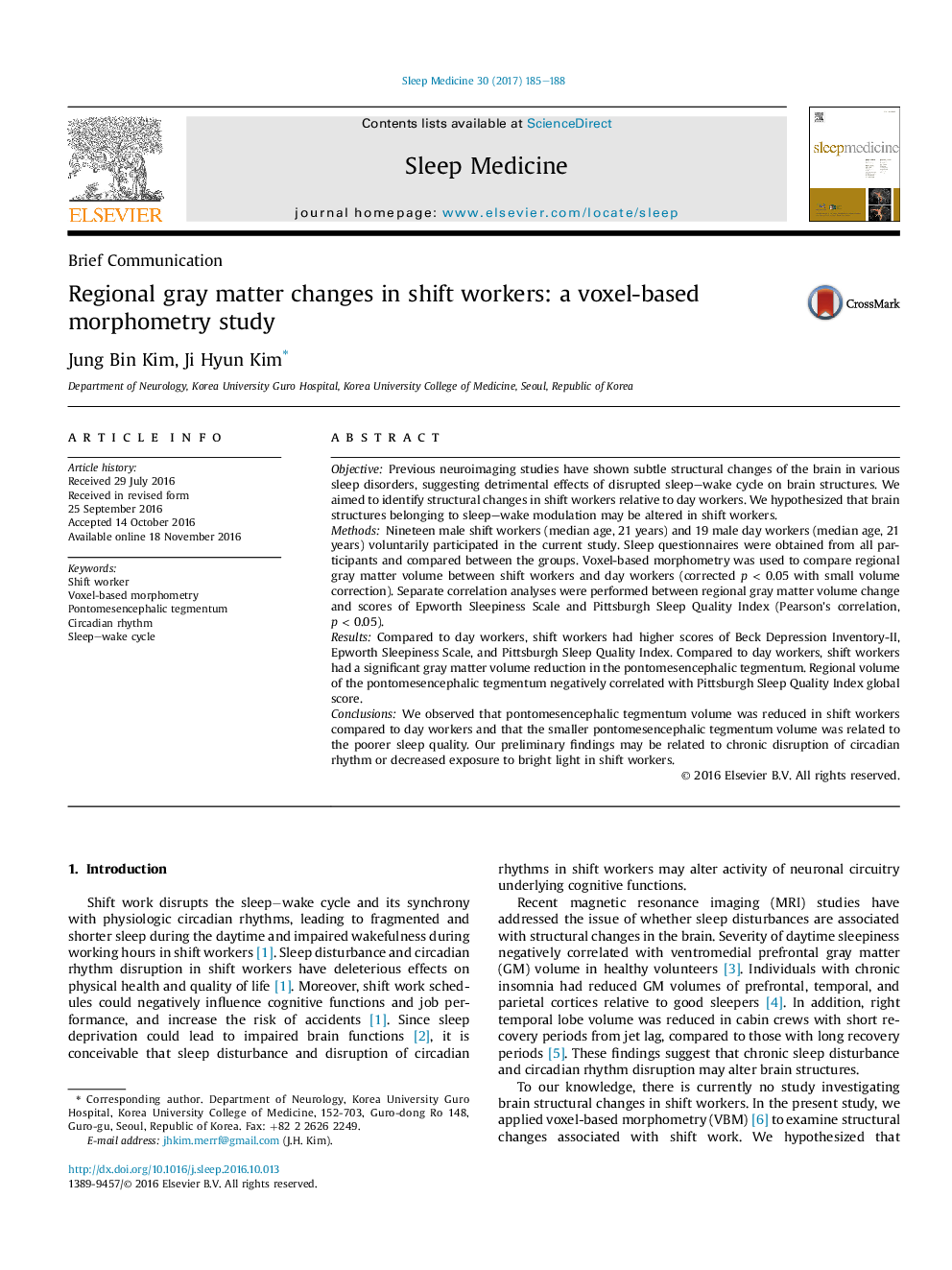| Article ID | Journal | Published Year | Pages | File Type |
|---|---|---|---|---|
| 5643838 | Sleep Medicine | 2017 | 4 Pages |
â¢Regional volume in the pontomesencephalic tegmentum was reduced in shift workers.â¢The smaller pontomesencephalic volume was related to poorer sleep quality.â¢Disruption of circadian rhythm may alter brainstem structures in shift workers.
ObjectivePrevious neuroimaging studies have shown subtle structural changes of the brain in various sleep disorders, suggesting detrimental effects of disrupted sleep-wake cycle on brain structures. We aimed to identify structural changes in shift workers relative to day workers. We hypothesized that brain structures belonging to sleep-wake modulation may be altered in shift workers.MethodsNineteen male shift workers (median age, 21 years) and 19 male day workers (median age, 21 years) voluntarily participated in the current study. Sleep questionnaires were obtained from all participants and compared between the groups. Voxel-based morphometry was used to compare regional gray matter volume between shift workers and day workers (corrected p < 0.05 with small volume correction). Separate correlation analyses were performed between regional gray matter volume change and scores of Epworth Sleepiness Scale and Pittsburgh Sleep Quality Index (Pearson's correlation, p < 0.05).ResultsCompared to day workers, shift workers had higher scores of Beck Depression Inventory-II, Epworth Sleepiness Scale, and Pittsburgh Sleep Quality Index. Compared to day workers, shift workers had a significant gray matter volume reduction in the pontomesencephalic tegmentum. Regional volume of the pontomesencephalic tegmentum negatively correlated with Pittsburgh Sleep Quality Index global score.ConclusionsWe observed that pontomesencephalic tegmentum volume was reduced in shift workers compared to day workers and that the smaller pontomesencephalic tegmentum volume was related to the poorer sleep quality. Our preliminary findings may be related to chronic disruption of circadian rhythm or decreased exposure to bright light in shift workers.
